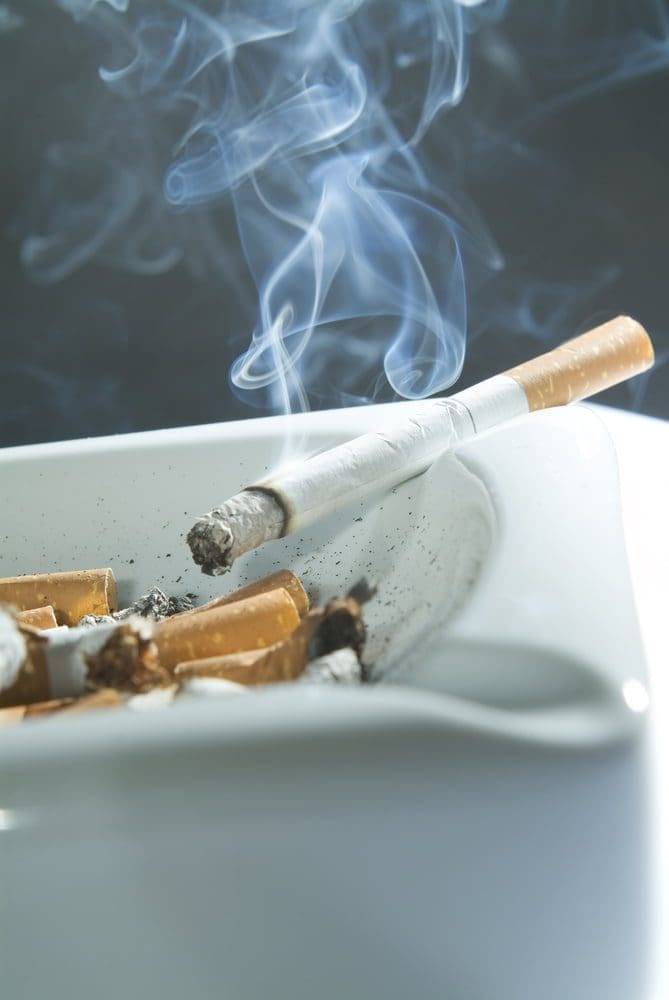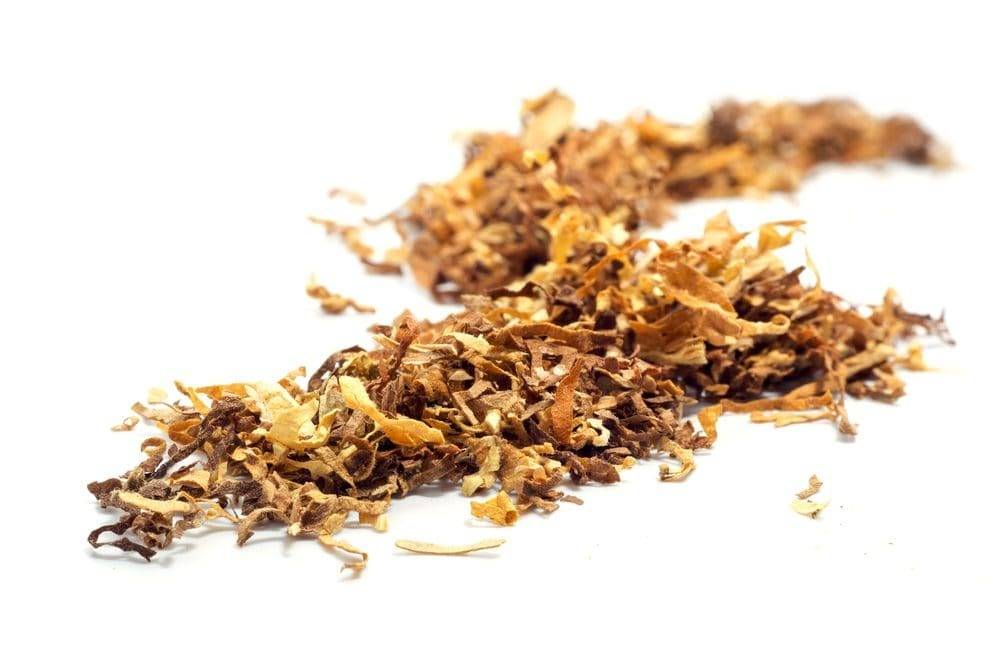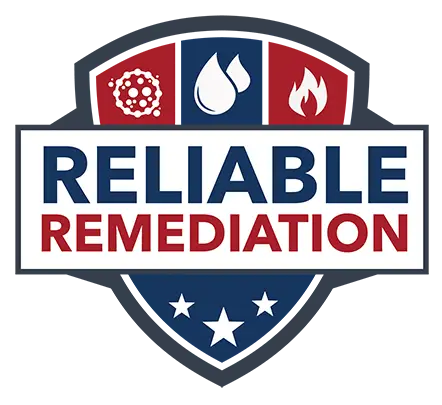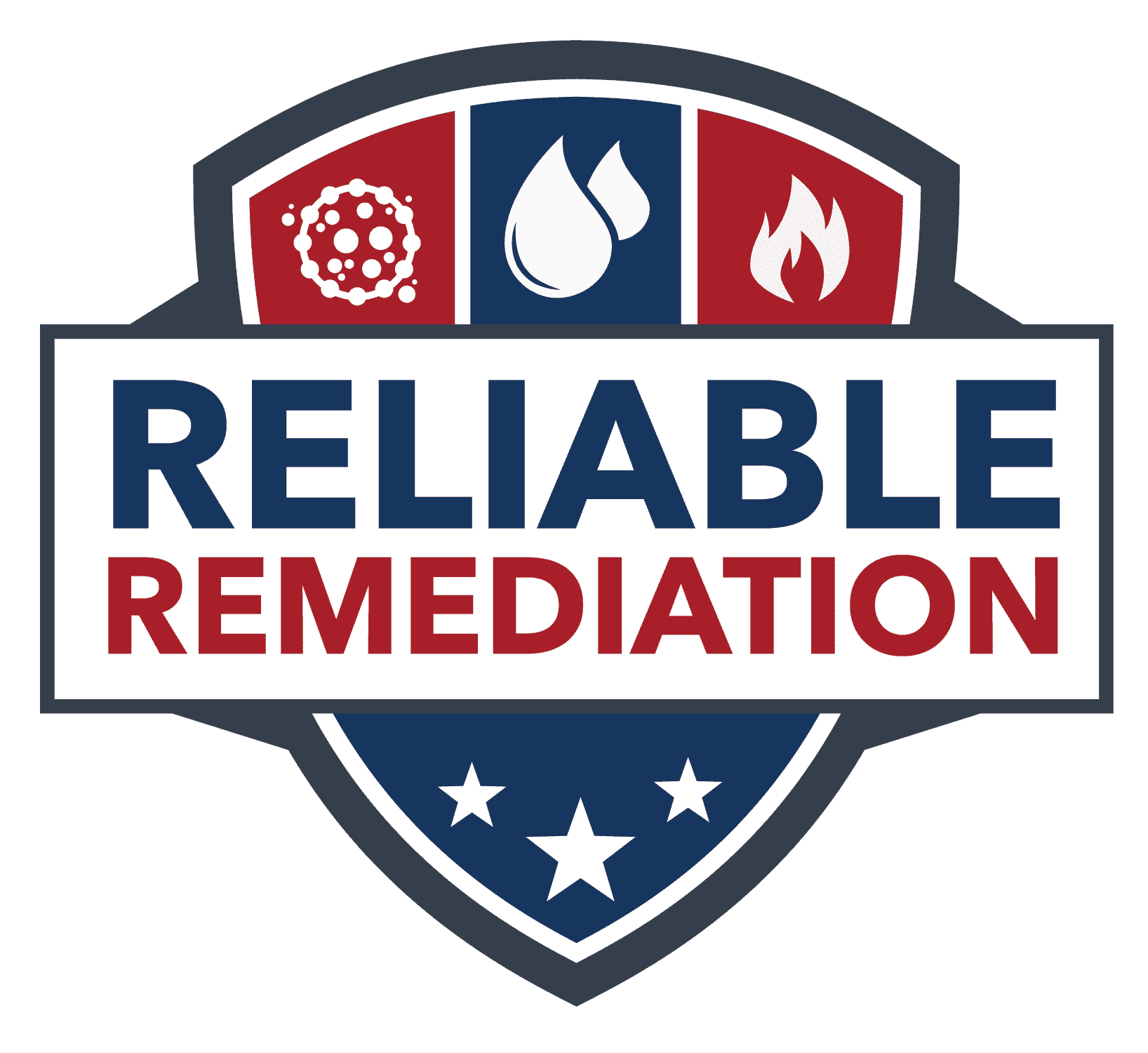Odor Elimination
Don't be embarrassed by smells in your home ever again. Call NowRequest an EvaluationReclaim Peace of Mind
Restore Your Property
Remove Nagging Odors
Are you nose-blind to common odors in your home?
Your brain can tune out odors so that they no longer register as strongly as they do for others.
No one should have to wonder if others are offended by smells from their pets, lingering food aromas, or tobacco/cannabis
Breathe deeply knowing things are back to normal.
Odors come from many different sources. At Reliable Remediation, we understand the science of odor elimination. We’ll remove the source and treat the area so things get back to normal.
When you work with us, we’ll:

Identify the odor source and remove the affected building materials, if necessary.

Treat residual odors around the source – no “one size fits all” solutions.

Clean surfaces in the home as needed to make sure your space smells great.
Finding and Treating Odors Requires the Right Tools
Various sources release odors including new building materials, decomposing organic matter, incomplete combustion, and many others. Source identification and source location are the first steps in odor removal. In some cases, identifying the odor problem is easy because the odor is recognizable and the source is easy to find. In other situations, the odor will be unrecognizable and the source of the odor hidden and unknown.

Odor sources
A variety of tools are utilized to locate or detect odor sources. Air samplers (devices that draw measured amounts of air over tubes that react) can be used to confirm the absence or presence of specific gases. A portable electronic nose has been developed. Luminol is used by crime scene investigators to locate blood. Specialized ultraviolet lights are useful in locating some urine deposits. Many restorers use a moisture sensor to assist in finding odors because moisture and odors often go hand in hand. For practical purposes, your nose is still your best odor-locating tool!
Source removal
Source removal (to the extent possible) is the first step in a successful odor removal procedure. After identifying the source of an odor, the more of that source you can remove, the less of an odor problem you will have to handle. In pet odor situations, for instance, disposal of contaminated carpet padding and pretreatment of affected textiles with an acid rinse will dramatically improve your results. Keep in mind that if the project involves fire or trauma cleanup, make sure you have been given permission to remove items prior to starting the project.
Treat it
The second step in odor removal involves treatment of the residual odors after the sources have been removed. There are several options for treatment available including adsorbents, neutralization, oxidization, biocides, counteraction, masking, and bioenzymatic digestion.
Adsorbents
Typically solid materials, such as activated charcoal or baking soda, capture and hold odors on their surfaces. Activated charcoal or carbon has been treated with heat and steam. Activated carbon works the same way as the box of baking soda you put in your refrigerator to adsorb odors: Odor molecules adhere to the surface of the sodium bicarbonate particles that make up baking soda.
Biocides
Are materials that inhibit or kill the growth of microorganisms. Some microorganisms produce odors due to chemical processes in which they participate, such as fermentation and decomposition. Disinfectants and antimicrobials are biocides that are effective in eliminating microbial-related odor problems. Odors caused by the metabolic process of microorganisms are commonly referred to as microbial volatile organic compounds or MVOCs. Serious microbial contamination should be properly remediated. These procedures are beyond the scope of this discussion.
Air Cleaners
Equipped with activated carbon filters can be utilized to literally grab odorous gases out of the air. Specialty adsorbents are available with affinity to adsorb specific gases.
Counteraction
means to “work against.” Some odors are made up of a mixture of many compounds and as such are called complex odors. Complex odors, such as smoke odor, respond well to a series of odor-counteraction procedures such as suppression spraying, vapor phase re-odorization, and thermal fogging. Most odor-control products contain a combination of masking and pairing agents. Pairing agents combine with and change the perception of malodorous substances into odorless compounds.
Neutralization
Implies a chemical balance or a mathematical equation where 1-1=0. Neutralization processes work well against chemical odors such as chlorine and various types of acids. For instance, the application of a solution of sodium bicarbonate and water will effectively neutralize the odor liberated from an acid spill. Sodium thiosulfate (also known as “photographer’s hypo”) neutralizes halogens such as chlorine, bromine, and iodine.
Masking
Is the disguising of a malodor with a stronger, more pleasant odor. These deodorants are masking agents. Time-release deodorants can be granular, oils, or gels that have been saturated with deodorants. These products are designed to release the fragrance slowly over time.
Oxidation
simply put, is a chemical reaction in which oxygen combines with another substance. Adding oxygen to odorous organic matter can be an effective odor control technique. Oxidizing agents like hydrogen peroxide and household chlorine bleach are effective deodorizers due to their oxidizing capabilities. Similarly, an ozone machine (an electrically powered device used to produce an oxidizing gas) can be very effective in eliminating odor problems such as those caused by organic decomposition and by skunks.
Bioenzymatic digestion
Is a process whereby specially engineered bacteria produce enzymes that consume or digest odorous material such as animal excreta, spilled fuel oil, and decaying protein (spoiled milk, rotten fish/eggs). Bioenzymatic digestion is also used in laundry and in other cleaning processes including carpet cleaning.
Some odor problems can be remedied with just one of the techniques discussed above. Others require multiple procedures. It’s important to find a professional that understands the science of odor elimination & can assist you effectively, efficiently, & expeditiously.
Adapted from an article by Bill Weigand, Gary Loiben, and Gary Funari in Cleanfax Magazine
Getting Rid of Cigarette Smoke Odors (Tobacco and Cannabis)
Homeowners, realtors, and property managers frequently search for contractors who can successfully remove tobacco smoke and other odors. This service is especially important when preparing to rent an apartment or sell a home – or even before selling a vehicle.
Lingering smoke odors create significant issues. A survey of realtors found that 88% of realtors say it is difficult to sell a home in which the previous owners smoked tobacco, and the presence of smoke odors can reduce the value of a home by as much as 20%.
Other malodors that can negatively affect a home’s value relate to pets, overcooked protein, and other food odors such as fish, curry, onions, and garlic. The odor elimination process can work on all of them.

Smoke Odor Sources
Smoke and odors from tobacco disperse in the air and adhere to all surfaces. These sticky tobacco residues accumulate and continually release malodors. Heavy smoking over a long period of time causes stubborn and severe smoke odors. The yellowish-brown, sticky substance left on all surfaces and furnishings is easy to see, smell, and feel, but it is extremely difficult to remove. Residue from tobacco often discolors painted walls and plastics, and it can permanently change the appearance of wallpaper, blinds, paint, and other surfaces. The smoke penetrates upholstery, carpet, drywall, and window treatments, and the HVAC system will carry these residues and odors throughout the structure.
The resulting odor and appearance from long-term smoking in enclosed areas can resemble that of an actual fire. To successfully remove tobacco and cannabis residue and odor requires skill and expertise, but with the right tools, process, and expertise we can help you rid your property of these odors.
Proven Odor Removal System
No single product exists that eliminates tobacco and cannabis odors, but there are proven systems that do work. Here’s a sample of some of the steps necessary for a complete cleaning:
Step 1: Thermal fog using a heat-activated odor counteractant that penetrates cavities and materials and creates a vapor barrier to prevent smoke malodors from returning.
Step 2: Clean all surfaces—including cabinets, inside drawers, ceilings, and walls—with a degreaser that contains brightening and deodorizing agents.
Step 3: Treat hard and soft surfaces with a product that is designed specifically to neutralize and deodorize tobacco/cannabis odors. Apply with a sprayer or use with carpet cleaning extraction equipment.
Remember that all areas of the home are likely contaminated, so ALL surfaces need to be cleaned and treated to truly eradicate odors. This includes wall surfaces, doors, molding and trim, ducting, ceilings, carpet, tile and grout, and cabinetry. Finally, we clean the air in the space. Using a HEPA air scrubber equipped with an activated carbon filter is another tool we use to not only assist in removing odors, but also improve the indoor air quality, as recommended in a recent Environmental Protection Agency guide.
Soft goods such as upholstery, bedding, window coverings, and rugs require special attention. Because they absorb odors so well and are often easily damaged, these items may require specialty upholstery or fabric cleaning expertise to restore. In some cases, the owner may prefer to simply replace these items. Treatment of antiques, paintings, jewelry, electronics, and anything that is irreplaceable or especially valuable to the customer may be referred to a restoration specialist for that specific item. We never proceed with any cleaning procedure or disposal without permission.
Finding Solutions
People react differently to smells. Some potential homebuyers may immediately decide against a house where malodors are present, while others may remain open to it, knowing they will have to invest time and money into remediation. In either case, negative odors will make a significant impact on how the home is perceived and valued. Our ability to remove tobacco smoke odors can save you money.
Delivering the “smell of clean” using a proven odor removal system will result in satisfied occupants. Tobacco and cannabis smoke removal is a detailed process – we can help!
Adapted from an article by John Otero in Cleanfax Magazine
Disaster Happens. We can FIX it!

Health Problems Related To Environmental Tobacco Smoke
Key Signs/Symptoms in Adults
- rhinitis/pharyngitis, nasal congestion, persistent cough
- conjunctival irritation
- headache
- wheezing (bronchial constriction)
- exacerbation of chronic respiratory conditions
Key Signs/Symptoms in Infants and Children
- asthma onset
- increased severity of, or difficulty in controlling, asthma
- frequent upper respiratory infections and/or episodes of otitis media
- persistent middle-ear effusion
- snoring
- repeated pneumonia, bronchitis
Environmental tobacco smoke (ETS) is a major source of indoor air contaminants. The ubiquitous nature of ETS in indoor environments indicates that some unintentional inhalation of ETS by nonsmokers is unavoidable. Environmental tobacco smoke is a dynamic, complex mixture of more than 4,000 chemicals found in both vapor and particle phases. Many of these chemicals are known toxic or carcinogenic agents. Nonsmoker exposure to ETS-related toxic and carcinogenic substances will occur in indoor spaces where there is smoking.
All the compounds found in “mainstream” smoke, the smoke inhaled by the active smoker, are also found in “sidestream” smoke, the emission from the burning end of the cigarette, cigar, or pipe. ETS consists of both sidestream smoke and exhaled mainstream smoke. Inhalation of ETS is often termed “secondhand smoking”, “passive smoking”, or “involuntary smoking.”
The U.S. Environmental Protection Agency (EPA) has classified ETS as a known human (Group A) carcinogen and estimates that it is responsible for approximately 3,000 lung cancer deaths per year among nonsmokers in the United States. The U.S. Surgeon General, the National Research Council, and the National Institute for Occupational Safety and Health also concluded that passive smoking can cause lung cancer in otherwise healthy adults who never smoked.
Children’s lungs are even more susceptible to harmful effects from ETS. In infants and young children up to three years, exposure to ETS causes an approximate doubling in the incidence of pneumonia, bronchitis, and bronchiolitis. There is also strong evidence of increased middle ear effusion, reduced lung function, and reduced lung growth. Several recent studies link ETS with increased incidence and prevalence of asthma and increased severity of asthmatic symptoms in children of mothers who smoke heavily. These respiratory illnesses in childhood may very well contribute to the small but significant lung function reductions associated with exposure to ETS in adults. The adverse health effects of ETS, especially in children, correlate with the amount of smoking in the home and are often more prevalent when both parents smoke.
Airborne particulate matter contained in ETS has been associated with impaired breathing, lung diseases, aggravation of existing respiratory and cardiovascular disease, changes to the body’s immune system, and lowered defenses against inhaled particles. For direct ETS exposure, measurable annoyance, irritation, and adverse health effects have been demonstrated in nonsmokers, children and spouses in particular, who spend significant time in the presence of smokers. Acute cardiovascular effects of ETS include increased heart rate, blood pressure, blood carboxyhemoglobin; and related reduction in exercise capacity in those with stable angina and in healthy people. Studies have also found increased incidence of nonfatal heart disease among nonsmokers exposed to ETS, and it is thought likely that ETS increases the risk of peripheral vascular disease, as well.
Odor Sources



The Most Common Sources of Odor We Treat
Smoke, Pets, and skunk – and advice for removing each.
Pets
When a client purchased a condominium last year, the seller had an old dog that had several “accidents” on the carpet over the years. The seller no longer even noticed the urine odor, but just about everyone else did. The client hired a carpet cleaner that cleaned the carpet meticulously, but after a few days the smell came back and was even stronger!
Although there are many fine products available for pet odor removal, there are no “magic potions” or cleaning systems that will work on every carpet in all pet odor situations. If the pet “accident” problem has been going on for a long period of time, it increases the likelihood that the pad and subfloor are saturated with urine and cleaning the surface of the carpet alone will prove futile.
Sometimes it can be cleaned and sanitized, other times carpet pad (and even carpet) need to be replaced. There are even times when building materials have to be removed (flooring, subfloor, baseboard and trim from spraying etc.).
With carpets, products that are commonly used and are appropriate for synthetic fibers can be disastrous on wool or silk or other natural fibers,” says Travis. This is likely true for fibers such as cotton, sisal and others. Sometimes you just need a professional.

Skunk
If a skunk has gotten into your home or business, you must seal and paint to remove the smell. There are a lot of products on the market to help combat odors: Hydroxyl machines, disinfectants, virucides, deodorizers, etc. We’re familiar with these products and when it is the right time to use specific ones. Experience and training matters.
Smoke
As simple as it sounds, a thorough cleaning is the most common. You have to clean everything – tops of door frames, cabinet hinges, pull out the dishwasher and clean behind it, etc. It should be the most involved, deep cleaning that the house or business has ever gone through. Just the smallest amount of soot left behind can make the smell linger.
Having someone that has experience performing this service is invaluable. There are many types of fires, including poultry fires, wildfires and electrical fires, and they all need to be handled a certain way.
Special Insider TIP: We clean from the bottom up. It seems like that should be the other way around, but cleaning from the bottom will help eliminate soot streaks.
The Powerhouse of Odor Elimination – Chlorine Dioxide
Our favorite item to combat odor is Chlorine Dioxide. It comes in a liquid form and a gas form. It attacks the odor at its source. Chlorine Dioxide (ClO2) is a proven odor-eliminating gas with strong oxidizing abilities. It is a work horse in odor abatement. The physical nature of chlorine dioxide is a gas of a yellow green color.
It is very soluble in water and is commonly used in water treatment for drinking water and vegetable rinses, it actually breaks down into a saltwater solution. CLO2 is one of the strongest oxidizers of odor molecules.
It’s Often Confused – Chlorine Dioxide smells somewhat like chlorine bleach, but it should not be confused with chlorine bleach or chlorine gas.
They all share the name of “Chlorine” but are very different chemicals that react differently and produce by-products that have little in common. Chlorine Dioxide forms none of the harmful by-products produced by chlorine gas or chlorine bleach. Chlorine bleach and chlorine gas both operate through chlorination of a substance, the sharing of a chlorine atom. Chlorine Dioxide is effective through an oxidation process where a substance is oxidized.
Chlorine Dioxide readily vaporizes and reacts with many things around it, or it decomposes and it is gone. Once Chlorine Dioxide is deployed through the gas method it either reacts or it decomposes. One of the most significant benefits of ClO2 is that it does not stay around. The gas breaks down into sodium ions and the liquid breaks down into salt and water
Facts About Chlorine Dioxide
- It has been tested and proven to be the most effective tool in the odor removal industry today.
- Chlorine Dioxide eliminates the odors caused by mold & mildew, along with eliminating odors from cigarette smoke, fire smoke, urine, fecal matter, skunk, and rotten food to name a few.
- It can be used as a liquid, a gas, or in tandem depending on the recommended protocols.
- When applied as either gas or liquid, ClO2 goes to work and does its job and when it is finished the gas breaks down into sodium ions and the liquid breaks down into salt and water.
- Unlike Chlorine (Cl2), Chlorine Dioxide (ClO2) remains a true gas when dissolved in water as it does not hydrolyze in water.
If you are experiencing a problem right now – call us for assistance – and check out this Chlorine Dioxide Fact Sheet – Odor Elimination, or simply download it and keep it handy in case anything ever happens.
It’s Easy to Get the Help You Need

Get an Evaluation

Receive a Customized Plan


